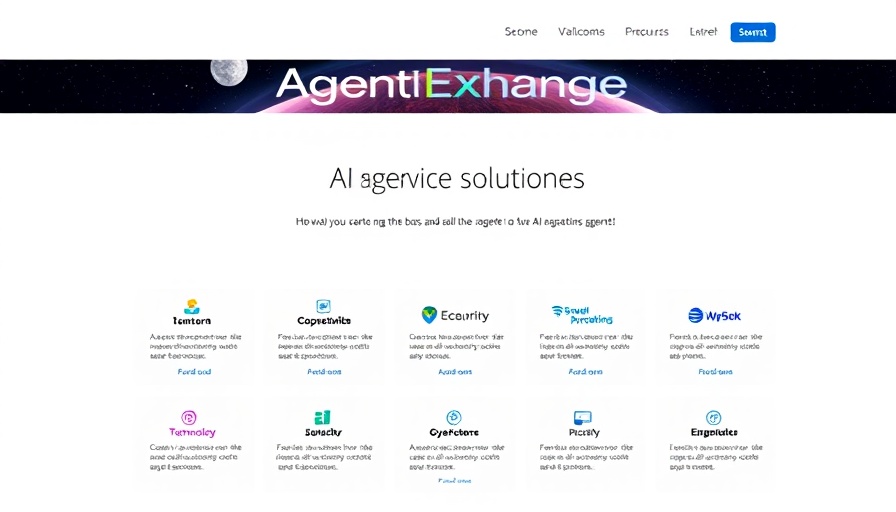
The Birth of Salesforce's AgentExchange: A New Era for AI Agents
Salesforce is stepping boldly into the future of artificial intelligence with the launch of its AgentExchange marketplace. This innovative platform is designed to simplify the creation and deployment of AI-driven digital labor, allowing businesses to effectively harness the power of role-based AI agents. With AgentExchange, businesses, developers, and partners can more easily discover, build, and monetize these agents, marking a significant shift in how digital labor can be integrated within enterprise workflows.
Understanding Role-Based AI: A Paradigm Shift
The emergence of AgentExchange coincides with a substantial transition across industries, moving from traditional task-based automation towards standardized, role-based AI agents. This shift emphasizes the need for structured metadata, as suggested by industry experts, allowing agents to autonomously execute specific business functions. According to Adam Evans, EVP, and GM of Salesforce AI, “Agentic AI is transforming the way businesses operate,” allowing software to act with a level of reasoning and autonomy previously thought impossible.
Marketplace Features: Empowering Developers and Businesses
With the debut of AgentExchange, Salesforce is introducing an integrated ecosystem that already includes over 200 partnerships with leading companies such as Google Cloud, DocuSign, and Workday. The marketplace allows for the inclusion of various components, such as:
- Actions: Basic building blocks for integration.
- Topics: Defined sets of actions for specific tasks.
- Prompt Templates: Reusable scripts for efficient communication.
- Agent Templates: Pre-configured solutions that combine actions and topics with standardized metadata.
Salesforce’s unified platform provides a robust foundation for these components, which hinges on the need for context, compliance standards, and structured data to ensure the development of trustworthy AI agents. The focus on security and compliance stands out as critical in today's data-sensitive environments.
Expanding Applications: Use Cases Across Industries
The AgentExchange marketplace is designed to cater to a plethora of industry scenarios. In sales and service, tools like DocuSign enhance document automation, while platforms such as Neuron7 improve customer service by leveraging AI capabilities. In finance and HR, integrations with Workday streamline processes like employee onboarding and benefits management, showcasing how diverse industries can benefit from this robust new platform.
Setting Standards: The Importance of Metadata
One of the essential threads in the functionality of role-based agents is the role of standardized metadata. As highlighted in various research notes, including insights from the AWS community, precise role definitions and capabilities are necessary to facilitate the effective operation and integration of these AI agents. This structured approach to metadata ensures that agents can be discovered, orchestrated, and utilized effectively across complex enterprise ecosystems.
Looking Ahead: The Future of AI Integration
As Salesforce and its competitors like Workday and SAP position themselves within this burgeoning market, the focus is shifting toward establishing AI marketplaces as orchestration hubs. This is not just a matter of enhancing operational efficiency but also of redefining how businesses interact with AI technologies. By standardizing roles and capabilities through structured metadata, businesses can unlock greater potential and enhance productivity.
Conclusion: The Call to Action for Businesses
With the launch of the AgentExchange marketplace, Salesforce is not only setting a new standard for AI integration but also encouraging businesses to rethink their approach to digital labor. As companies begin to adopt role-based AI agents, it's essential to embrace this change and explore how AgentExchange can fit into their operational strategy.
Businesses looking to stay ahead of the curve should prioritize experimentation with these new technologies, evaluate their existing workflows, and consider how they can implement AI-driven solutions to streamline operations, improve services, and increase overall efficiency.
 Add Row
Add Row  Add
Add 




 Add Row
Add Row  Add
Add 

Write A Comment